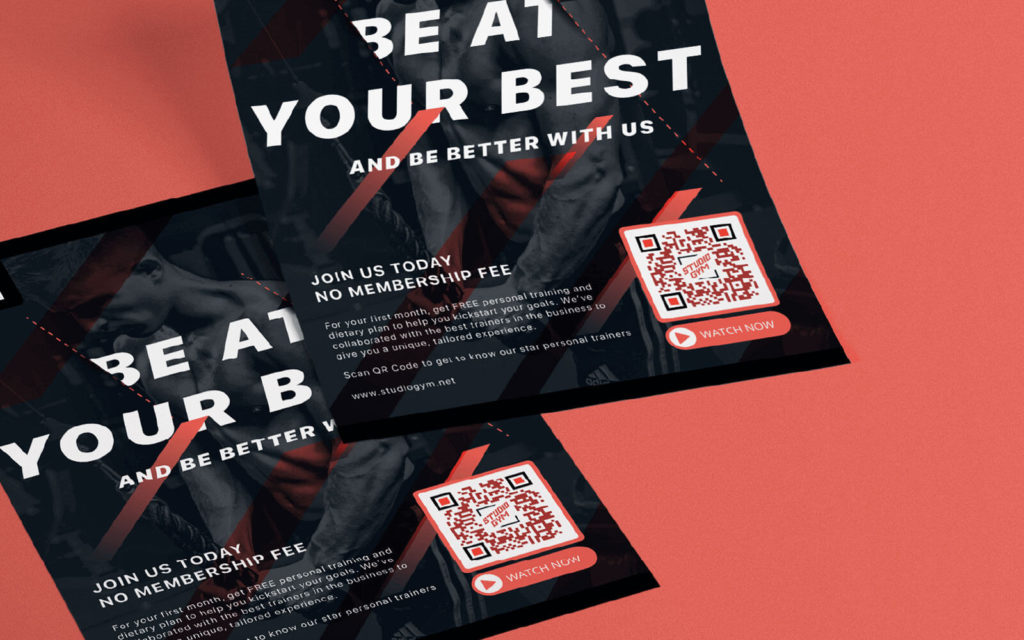- Best Practices ●
- COVID-19 ●
- Industry Trends ●
- Partners ●
- Product ●
How to Use QR Codes in Brand Collaborations
Forget what you know about brand collaborations and start fresh with the help of QR Codes. Read on as our guest writer, Rodney Laws of ecommerceplatforms.io offers some tips into collaborating efficiently using these small, pixelated squares.
It’s important for a brand to stand out in its niche, so most promotional suggestions will focus on independent action. How can you make your website better? How can you make your customers happier? How can you establish a unique value proposition? Leaning on others might even seem counterproductive, taking the focus away from your brand specifically.
This is a myopic view of the situation, of course, because there’s much to be gained through collaboration. In many ways, it’s the unsung hero of the marketing world, whether it’s online, offline, or both. When two or more companies with compatible audiences band together, the result is mutual benefit, often achieving results that go far beyond what they could possibly have yielded through their separate efforts. If you’ve avoided collaboration, it’s time to change that.
But how exactly should you make a brand collaboration work? There are so many elements that factor into a great brand collaboration, but it would take a long while to cover all of them. In this piece, we’re going to focus exclusively on the role of QR Codes in the collaboration process. How can you deploy them most effectively? Let’s answer that key question.
Why QR Codes are vital for optimal mutual promotion
There are various reasons why you might engage in some brand collaboration: one common practice is creating high-quality content that goes beyond what the individual contributors could manage, for instance. Sometimes that’s where the collaboration ends. Each contributor gets to post the content and use it for outreach, but that’s all. More can be done.
If you’re going to collaborate with another brand, it should be one with which you can engage in a mutual promotion. You encourage your audience to consider that brand, and they encourage their audience to consider you (targeting existing audiences that suit your brand is one of the best ways to get attention). This does require the two brands to have audiences that fit together, but it doesn’t make much sense to collaborate with any brand that’s either a direct competitor or from an industry that’s completely unrelated.
But what’s the practical implementation of this mutual promotion? Well, one common option is the provision of backlinks. The more popular brands you can get to link to your site, the better your site will perform in organic search, earning you more visits. Another option is simply talking about each other. When you engage with your customers, you can casually point them towards your collaboration partner so they know to seek them out if they’re interested in what they offer.
The problem with backlinks is twofold: not only are they very ineffective when deployed offline (who wants to take the time to painstakingly type in an address, even if it’s a shortened custom URL?) but they’re also not very eye-catching and can get lost among alternatives. The average page has a lot of links as a matter of necessity.
QR Codes, though, can be used for offline materials or online materials however they’re depicted, anyone with a modern smartphone can open up their camera app and get redirected to the target destination. They’re versatile, fast, easy to generate, and can be fully customized. In short, everyone knows what a QR Code looks like and what it does. Another element you shouldn’t overlook is the inherent mystery of a QR Code: you can see where a URL goes, but a QR Code requires you to take action to learn exactly where it’s intending to take you.
How you can deploy QR Codes in various situations
As noted, there are various reasons why QR Codes are extremely important for mutual promotion, and one of them is the versatility that allows them to be effectively deployed in many different situations. Let’s go through how they suit some distinct promotional opportunities:
Websites

It’s easy enough to put up a promotional panel at the top of a website’s homepage, and while you can create a call-to-action (CTA) in the form of a clickable button, it makes a lot of sense to supplement it with a QR Code. A visitor might want to follow the link on the mobile device without having to search for the site or type in the URL, particularly if the link is to a mobile app — and they can either follow the QR Code directly or take a photo of it and return to it later.
Emails

Emails might seem like odd places for QR Codes, but keep in mind that people can access different email accounts on their computing devices, and they might have desktop accounts that they don’t want to use on their phones (or don’t know how to configure for mobile access). Since it’s easy enough to throw in a QR Code alongside a regular CTA, it’s a justifiable addition.
Packaging

Now we’re entering an area that’s really suited to QR Codes. Just as brands that hold events can display the logos of their sponsors on their decorations, a brand that’s collaborating with another can update the packaging of its products to include QR Codes leading to that brand’s website. It can put them on the outside of the package, or inside the boxes on pamphlets or manuals (or even coupons). This is a really easy way to get people to follow an offline link.
Mailers

Just as you can send out packaging with QR Codes on, you can send out dedicated mailers with them. Direct mail remains an effective way of getting attention, particularly with the sheer saturation of the online world, so a brand can send out a regular promotional mailer and a mailer for its collaborator (with a QR Code) alongside it.
Banners

This type of offline advertising isn’t greatly in-demand at the moment due to the COVID-19 pandemic keeping people indoors and away from regular shopping areas (QR Codes are great for touchless interactions, of course), but it’s still one of the best ways for a brand to get attention from people who might not otherwise encounter it — and a QR Code is the only sensible way to let them take action.
Video advertising

Lastly, we need to think about the rising value of video advertising. You might not want to pay for advertising space on a TV channel, but what about on YouTube, or on a suitable channel on Twitch? You might find it too expensive to pay for an advertisement on a top influencer’s channel, but collaboration allows you to spread the cost, and a bold QR Code in the midst of a short video can stand out enough to get some interest (something that a URL really can’t do).
The mission-critical nature of message match
Something that’s incredibly important to consider when using QR Codes for brand collaborations is the significance of message matching. What does this involve? Well, when you use a QR Code, you use text and images to provide context about what the code leads to. You might, for instance, say “Order today and get 20% off!” as a cue that it will lead to a discounted order.
Now imagine opening up that QR Code and finding no evidence of a 20% discount. You might see a lower discount or no discount at all, and that’s assuming you even end up on an order page. That would be a clear case of a message mismatch: the page you visited failing to meet the message that led you to visit it.
This is a big concern for brand collaboration because you might not have control over both parts. You might ask your collaborator to link to a particular page, but see them wing the content and end up causing problems. Accordingly, ensure that you have a good relationship with any brand you partner with such that you can be sure they’ll follow your instructions when it comes to your message (and they can trust that you’ll do the same for them).
QR Codes are exceptionally useful throughout the marketing world, and they’re certainly very useful for brand collaborations where there are so many viable marketing tactics that span the online and offline worlds. If you pursue a brand collaboration for mutual gain, follow these tips to ensure that you get the best results.





